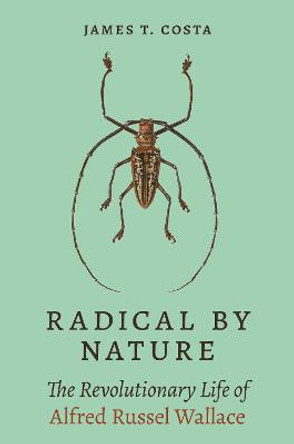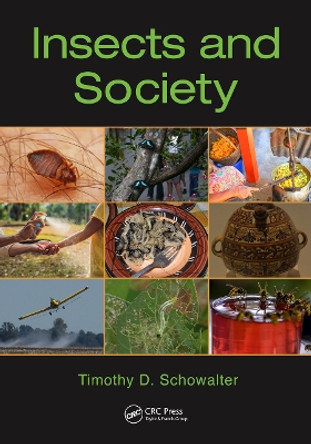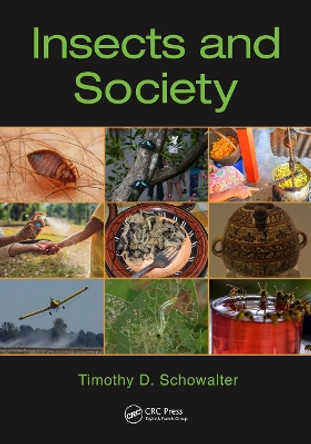Description
This book provides comprehensive, astoundingly thorough coverage of the 'minor' social insect groups, which have been neglected since Fabre brought the study of insect behavior to life over 100 years ago. The chapters make accessible for the first time a huge trove of obscure yet endlessly fascinating natural history, which should entertain as well as inspire future researchers to study its six-legged bestiary. I was especially pleased to see the historical treatments of issues and research topics, which put the fields and topics in perspective. The Other Insect Societies is a tremendously impressive piece of scholarship. -- Bernard Crespi, Professor of Evolutionary Biology, Simon Fraser University This marvelously researched and comprehensive work fills a major gap in the literature on insect social behavior...Jim Costa has done this only as a seasoned entomologist could accomplish it, with a full account of each major taxonomic group in turn, including the contextual information needed to understand the significance of the social behavior its constituent species display...[He] routinely travels from taxonomy to anatomy, from physiology to ecology, and into broad issues of natural history to create in this book an overall mosaic of what the 'other' insect societies are and what they have achieved across hundreds of millions of years of evolution. -- from Edward O. Wilson's Commentary on The Other Insect Societies
About the Author
James T. Costa is Executive Director of Highlands Biological Station and Professor of Biology at Western Carolina University. Bert Hoelldobler is the Robert A. Johnson Professor in Social Insect Research at Arizona State University. He was previously Professor of Biology and Alexander Agassiz Professor of Zoology at Harvard University and subsequently held the chair for Behavioral Physiology and Sociobiology at the University of Wurzburg, Germany. He is an elected member of many academies, including the American Academy of Arts and Sciences, the US National Academy of Sciences, and the German National Academy of Sciences, Leopoldina. He has received many awards, among them the Pulitzer Prize for The Ants, coauthored with E. O. Wilson. Edward O. Wilson was Pellegrino University Professor, Emeritus, at Harvard University. In addition to two Pulitzer Prizes (one of which he shares with Bert Hoelldobler), Wilson has won many scientific awards, including the National Medal of Science and the Crafoord Prize of the Royal Swedish Academy of Sciences.
Reviews
This book provides comprehensive, astoundingly thorough coverage of the 'minor' social insect groups, which have been neglected since Fabre brought the study of insect behavior to life over 100 years ago. The chapters make accessible for the first time a huge trove of obscure yet endlessly fascinating natural history, which should entertain as well as inspire future researchers to study its six-legged bestiary. I was especially pleased to see the historical treatments of issues and research topics, which put the fields and topics in perspective. The Other Insect Societies is a tremendously impressive piece of scholarship. -- Bernard Crespi, Professor of Evolutionary Biology, Simon Fraser University
This marvelously researched and comprehensive work fills a major gap in the literature on insect social behavior...Jim Costa has done this only as a seasoned entomologist could accomplish it, with a full account of each major taxonomic group in turn, including the contextual information needed to understand the significance of the social behavior its constituent species display...[He] routinely travels from taxonomy to anatomy, from physiology to ecology, and into broad issues of natural history to create in this book an overall mosaic of what the 'other' insect societies are and what they have achieved across hundreds of millions of years of evolution. -- from Edward O. Wilson's Commentary on The Other Insect Societies
Perhaps we need fresh data from previously neglected kinds of insect societies. This is the approach James Costa offers in The Other Insect Societies. Costa launches the entomological equivalent of subaltern studies, focusing deliberately on species that have failed to make it to Wilson's elite grade of 'eusociality.' Readers will find in the book a fascinating wealth of information about the obscure social lives of earwigs, grasshoppers, crickets, mantids, cockroaches, aphids, treehoppers, bugs, thrips, beetles, caterpillars, sawflies, and even some non-insect anthropods. Costa's book will inevitably be compared with The Evolution of Social Behavior in Insects and Arachnids, edited by Jae C. Choe and Bernard Crespi...I am rather optimistic that, paralleling the effects of the subaltern studies of Indian historians, a focus on other insect societies will provide valuable fresh perspectives useful even for understanding present-day eusocial species...A few hours with Costa's book will bring any beginner up to date with a century's worth of scattered literature on almost everything that is known about any of the many obscure groups of insects discussed. -- Raghavendra Gadagkar * Science *
E.O. Wilson calls the honeybees, the army and leaf-cutter ants, and the mound-building termites the superstars of insect social behavior. In this demanding but interesting book, Costa explores the other arthropod orders for social behavior. A few of his chapter titles suggest the range of areas and activities he explores: 'Earwig Mothers,' 'Hopper Herds and Cricket Families,' 'Samurai Aphids' and 'Communes and Family Fortresses.' A good present for the serious scientist. -- Gerry Rising * Buffalo News *
For much of its history, the study of insect sociality has been dominated by the study of ants, bees and wasps...The other social arthropods have been largely ignored or relegated to fringe status. James T. Costa seeks to correct this oversight with his book The Other Insect Societies. He succeeds in showcasing the true diversity of social behaviour among insects, spiders and crustaceans, and provides support for a set of alternative hypotheses about social evolution that should stimulate research and fuel scientific debate for years to come...Although others have attempted to synthesize the literature on non-eusocial insect societies, this is the first major single-author monograph on the topic for more than a decade...Many of the taxa covered in the book are illustrated with stunning colour photographs. Costa takes a refreshingly unbiased approach to examining these fascinating societies, providing insight into how non-eusocial insect societies are structured, as well as details of their systematics, natural history, ecology and anatomy. His writing is scholarly enough to appeal to professionals, yet it is accessible enough to enlighten any interested reader. His book gives the 'other insect societies' well-deserved time in the spotlight. -- Jenai Miller and George Uetz * Nature *
In the introduction the author sets a goal of being comprehensive but not encyclopaedic, and to highlight important outstanding questions that will entice a new generation of eager young naturalists to take a closer look. This goal is, in my opinion, fully accomplished. The book will become a standard reference work on the subject for many years to come and boost research on insects that would otherwise be neglected or poorly studied. This unique source of information should not be missing from the bookshelf of any student of insect ecology or socio-biology. Nevertheless, broadly interested zoologists and ecologists as well as laymen naturalists will undoubtedly find it both instructive and entertaining. -- J. Zd'arek * European Journal of Entomology *
When one thinks of social insects it is usually of the very organized (eusocial) groups such as termites and ants, and the eusocial species of bees and wasps, which have highly complex societies. This book is an important reference to the literature of other, less complex, social arrangements found in many groups of insects and other arthropods. Costa has taken great pains to compile an erudite reference work that includes discussions of sociality in Derrnaptera, Orthoptera, Embiidina, Manteodea, Phasmatodea, Blattaria, Psocoptera, Zoraptera, Hemiptera, Thysanoptera, Coleoptera, Lepidoptera, Hymenoptera, and some other arthropod groups including arachnids, centipedes, millipedes, and crustaceans. -- R. C. Graves * Choice *
In this extraordinarily thorough book, James T. Costa sets the record straight and rebalances our view of sociality in insects by dealing with the neglected also-rans...[A] tour de force of natural history...The Other Insect Societies provides an encyclopedic and data-rich overview of that sociality, beautifully written with a love for the subject and with humor. It is a remarkable and eye-opening collation, a ground-breaking and first-class reference work of science and natural history. -- Gaden S. Robinson * Times Literary Supplement *
The Other Insect Societies is a stunning feat of scholarship...I think that everyone who teaches entomology should buy a copy and use it. Costa has a most engaging, unforced enthusiasm for these animals, and we are greatly in his debt that he has unlocked this secret world for us. -- William A. Foster * Trends in Ecology and Evolution *
I was very impressed by the depth of knowledge of the author of each taxonomic group and of the contextual information needed to understand the social behaviour of its members...The book will become a standard reference work on the subject for many years to come and boost research on insects that would otherwise be neglected or poorly studied. This unique source of information should not be missing from the bookshelf of any student of insect ecology or socio-biology. Nevertheless, broadly interested zoologists and ecologists as well as laymen naturalists will undoubtedly find it both instructive and entertaining. -- J. Zdarek * European Journal of Entomology *
[Costa] is an experienced and passionate naturalist that makes him an ideal author for this book: he simultaneously manages to be a narrator--understood by the public--as well as a scientist, achieving comprehensiveness in the subject. -- Dirk Maes * Journal of Insect Conservation *
Awards
Nominated for Pulitzer Prizes 2007.
Book Information
ISBN 9780674021631
Author James T. Costa
Format Hardback
Page Count 812
Imprint The Belknap Press
Publisher Harvard University Press









